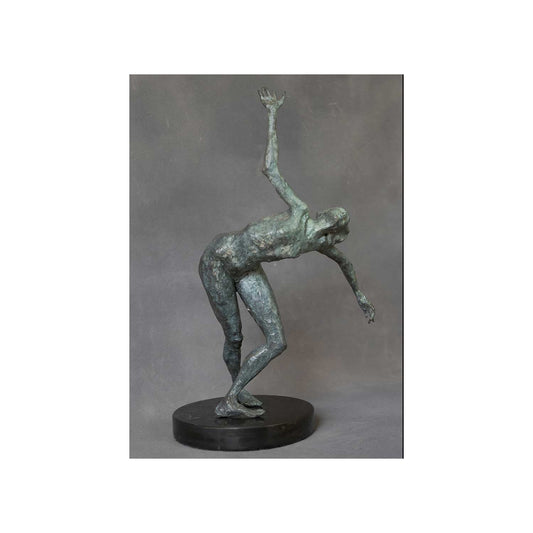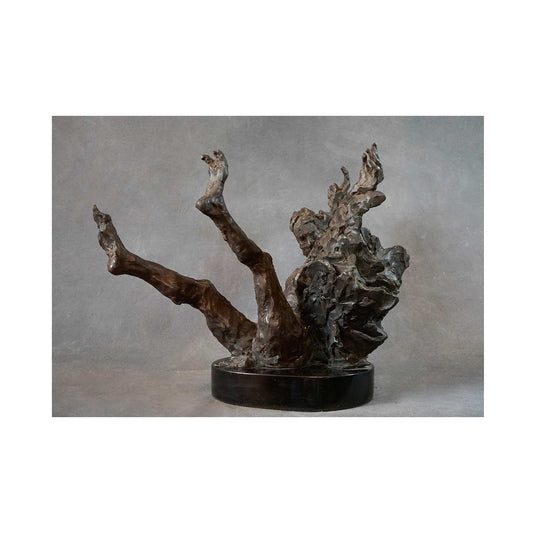KAREN SWENHOLT

ARTIST BIO & STATEMENT
Her work is deeply influenced by the Bay Area Figurative Movement of the West Coast, blended with the raw emotional intensity of East Coast Abstract Expressionism. This fusion is evident in her sculptures, where rough, painterly textures contrast with an underlying grace. She has a particular gift for capturing human expression and movement, using gesture and facial detail to convey emotion. Her aesthetic sensibilities are shaped by a reverence for both classical and expressive art, drawing inspiration from Goya, Manuel Neri, Edvard Munch, Velázquez, Rodin, Michelangelo, and the dramatic intensity of the Grünewald Altarpiece. While she embraces abstraction and formal beauty, her work remains rooted in the power of the human form.
Swenholt’s sculptures have been exhibited in a variety of museums and galleries, including Still Point Gallery (Alpharetta, GA), Waterfall Mansion & Gallery (New York, NY), Dadian Gallery (Washington, DC), Sewall-Belmont Museum (Washington, DC), and Gallery Imperato (Baltimore, MD), among others. She served as an Artist-in-Residence at Convergence in Alexandria, Virginia, where her large-scale sculptures are displayed in the Sculpture Garden. Additionally, she was the Artist-in-Residence at the Washington Shakespeare Company from 2002-2011 and at Wesley Theological Seminary in 2010. Her work is held in numerous private and public collections, including the home of Bono (U2), the Vladimir Romanov Palace in St. Petersburg, Russia, Cairn University (Philadelphia), and Wesley Theological Seminary.

Swenholt’s artistic vision reflects a deep respect for humanity’s place in the universe. She sees the world as a carefully crafted nest for humankind—both beautiful and fragile, capable of profound joy yet vulnerable to loss. This tension is central to her work, as she sculpts small monuments to the passions, struggles, and spiritual dimensions of human existence. Swenholt believes in art as a language—a means of understanding and being understood. Inspired by Victor Hugo’s observation that "In the Middle Ages, man had no great thought that he did not put in stone," she approaches sculpture as a dialogue between memory, truth, and form. She sculpts from both imagination and life models, treating the pose as a found object that evolves alongside her creative exploration. In some cases, Swenholt complements her sculptures with verse, likening these words to song lyrics—imperfect on their own but capable of deepening the experience of the art. Her work stands as a testament to the interplay of beauty and truth, engaging the viewer in a shared human journey.











